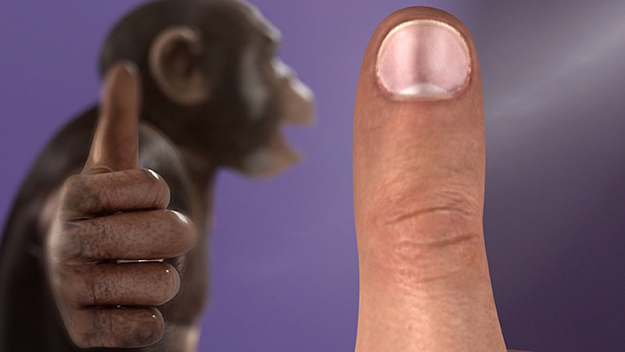Festivals: Migrating Forms
Even Pricks
In his 1956 manifesto “User’s Guide to Détournement,” Guy Debord exalted the potential role of the Situationist mode of artistic and theoretical production. Far from encouraging mere parody, détournement called for, as Douglas B. Holt put it, “turning expressions of the capitalist system and its media culture against itself.” This year’s edition of BAMcinématek’s Migrating Forms was full of contemporary attempts at keeping Debord’s transgressive spirit alive. Showcasing a number of videographic works that defy labels and generic conventions—as well as a mini-retrospective on Haskell Wexler—Migrating Forms may resist any simple cohesive thread but the impetus to unleash the critical power of moving images was undeniable.
The work of Ed Atkins, the artist collective known as GCC, and James N. Kienitz Wilkins, in particular, used the smorgasbord of images around us to puncture the insidious corporate and capitalist ideology that our current visual culture so thrives on. Atkins’s Even Pricks (13), for example, uses the now ubiquitous image of the thumbs up to stage a conversation about digital intimacy. Long a derided parody of film criticism and now a social media stand-in for affective reactions, the hyperreal 3-D model of the thumbs up in Atkins’s piece gets decontextualized (you see it up someone’s nose, in another’s belly-button, deflated as if it were a balloon) even as it is framed within that most shared of contemporary short-form films: the promo video (“This Summer… Destroy Your Life,” the tagline reads). Atkins uses hyperreal animation that place us squarely in the uncanny valley, making us aware of our own non-simulated reality. His happy christmas.mp4 (15), for example, features two CGI human characters mid-embrace who raise the eerie factor as they remain immobile for over three minutes even as one talks directly at us. A Primer for Cadavers (11) uses modernist stream-of-consciousness monologues to make us aware of our own sensory perception, asking us an unanswerable question, “Can you smell that?”
Homeland (Iraq Year Zero)
Similarly, the central tenets of the GCC collective—the acronym echoing that of the intergovernmental political and economic union, the Gulf Cooperation Council—are based on faithful mimicry of the type of corporate imagery that pervades the discourse around modernization and globalization. The voiceovers heard in many of their works (“The time to plan for a 21st-century future is now”; “Quality is not a goal but a lifestyle”) mock the empty rhetoric of brand management that has taken hold of the official discourse in the region. For their Migrating Forms program, GCC interspersed actual, risible videos made by governments and tourism offices that tout the burgeoning economy of places like Dubai. In their dazzling l’Air du Temps (15), originally conceived as a projection on a circular screen, a roving camera surveys an opulent Louis XVI estate that’s decked out with modern symbols of luxury. The work stands on its own as an indictment of a culture enamored and hypnotized by luxury, but its juxtaposition with borrowed footage from the real Dubailand advertisements (“Welcome to a land that shows the world what can be achieved when you have the courage to dream”) suddenly makes you keenly aware of the ludicrousness of both real and fake footage. The collective’s clipart and digital renderings only underline how these aspirational fantasy cannot actually be realized in the region.
This type of sociopolitical commentary made itself felt in other offerings, most touchingly in Abbas Fahdel’s Homeland (Iraq Year Zero) (15), which turned home movies shot weeks ahead of the U.S. occupation of Baghdad into a powerful indictment of American foreign policy, and in The Event, Sergei Loznitsa’s reconstruction of the Soviet Union’s dissolution in St. Petersburg (part of a small program devoted to the director). Their model, of remixing and recontextualizing old footage—the moving image as a politically inflected mirage—was at the heart of James N. Kienitz Wilkins’s triptych work. Shot in sequential video formats (BetaSP, MiniDV, HD), these short films piece together the bizarre tale of Andre: a thief, a murderer, a filmmaker who remains an elusive figure that becomes a way for Wilkins to discuss modern recording technology.
B-ROLL with Andre
In each film, a different part of Andre’s exploits is rendered: a Dashiell Hammett–inspired voiceover connects Andre to a possible police investigation in TESTER (16); an anonymous prison mate recounts what he knows of the now escaped convict in B-ROLL with Andre (15); and an account from someone who may have been one of Andre’s victims in Special Features (14). Confounding our ability to distinguish between real images (the found footage from a videotape that makes up TESTER), stock footage (the B-roll from the same-titled piece), and the sit-down interviews in Special Features (all of which appear to be actors reading a script via a teleprompter), Wilkins has crafted an ouroboros of a project in which the recorded image falsifies and validates at the same time. His pieces exist in a liminal place between fiction and reality, mediated and transformed by the camera. The very process of image-making (all three pieces lay bare how they were created) becomes a way of interrogating how we live. Andre, we are told, “had this thing about resolutions and digital cameras, like there’s a moral reason to pursue the higher resolutions.” The play on words is apt. Here, the screen becomes a postmodern mirror whose editorial process enhances our own perception even as it muddles it further.
In 1956, Debord suggested that “it is obviously in the realm of the cinema that détournement can attain its greatest effectiveness and, for those concerned with this aspect, its greatest beauty.” The selections presented this year at BAM’s Migrating Forms certainly live up to this promise, having made images old and new, fabricated and repurposed, bristle with a self-awareness fit for a 21st-century audience that so often looks without really seeing.










